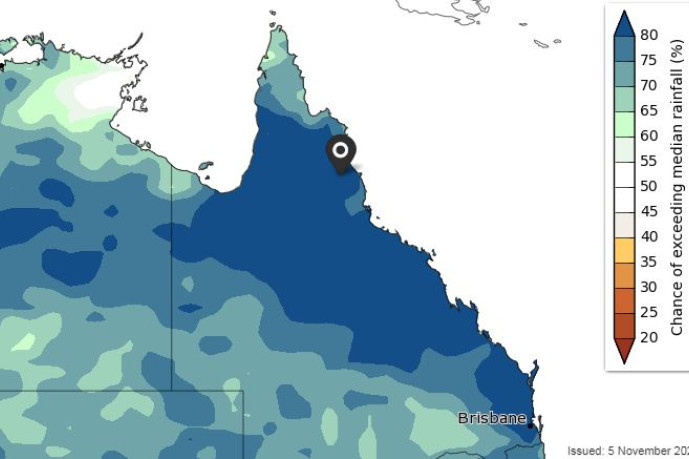General News
12 November, 2020
Tablelands weather outlook for the rest of 2020
The Bureau of Meteorology has released weather data for the next 3 – 4 months for Atherton and Mareeba and the Tablelands.

The basic outlook for the rest of the year for Atherton and Mareeba:
La Niña is active across the tropical Pacific Ocean. La Niña is typically associated with above-average rainfall across much of eastern Australia during spring and into early summer. For the November, December, January (NDJ) and the DJF (December, January, February) periods, both daytime and overnight temperatures are likely to be warmer than average along the coastal fringe, and possibly extending into the Tablelands. During periods of rain, daytime temperatures are typically cooler than usual, but overnight temperatures are warmer than usual due to cloud cover.
Rainfall: For the NDJ period, there is a 70% chance that Mareeba and surrounding areas will receive above-median rainfall (median rainfall is 371 mm for NDJ period). There are similar odds, around 70%, for a wetter than usual DJF period (median rainfall is 572 mm for DJF)
Storms: Thunderstorms are common on the Tablelands during the summer months (DJF). The season is also characterised by persistent heat and humidity, with frequent shower activity. During La Niña, there is a greater number of severe thunderstorms* across far northern Queensland during spring, but there is no significant correlation between the number of severe thunderstorms and La Niña in summer. *Severe thunderstorms are those that produce damaging wind (90km/h or more), heavy rainfall conducive to flash flooding, large hail (2cm diameter or more) and/or tornadoes.
Tropical cyclones: Every northern wet season has had at least one tropical cyclone cross the Australian coast. The tropical cyclone season runs from November to April. The Queensland (Eastern) region on average sees four tropical cyclones a season, with at least one crossing the coast. As a result of La Niña, there is a 66% chance of above-average tropical cyclone numbers this season in the Eastern region (and for Australia). There is an increased risk of at least one severe tropical cyclone crossing the Queensland coast.
Heatwaves: Heatwaves are also a risk. La Niña can bring more rain and increased humidity, which can mean fewer extreme heat days. While heatwaves may not be as severe, there is a risk of prolonged low- to moderate-intensity heatwaves, with high humidity, which can increase the risk to human health.
Bushfires: In terms of bushfires, with the expected wetter than average conditions across eastern and northern Australia, long-running bushfires are less likely, however, the wetter spring can lead to abundant grass growth, which could increase fire danger as it naturally dries during summer.


